
 |
|
|||||||
 |
|
|
Thread Tools | Search this Thread | Display Modes |
|
|
#1 |
|
(deceased)
Join Date: Sep 2008
Location: Bavaria, Germany - the center of 15th and 16th century gunmaking
Posts: 4,310
|
This has been with me for exactly 20 years. I have never seen such a fine sample retaining its original oak stock and patina in any museum. If ever, all you are likely to find are detached barrels or, at best, re-stocked in later times.
The term bronze for this sort of cast barrels has become widely accepted. In illumitated manuscripts of historic periods, however, they were called "brass" haquebut barrels (Messing Hakenpuchsen). As this, of course, depends on the actual part of the components, copper and pewter (bronze) or copper and zinc (brass), we should maybe just call them copper alloys. Metallurgical research has shown that 16th century copper alloy barrels often contain traces of silver. There is no doubt about this barrel being cast at one of the famous Nuremberg workshops the finest of which, at that period of time, were those of Beham (Peheim) und Pegnitzer. Sadly this barrel does not bear a maker's mark. Its early Renaissance bronze four stage barrel allows for a close dating to 1515-20. As only bronze barrels follow roughly this scheme of staging it shall be referred to at large here. Starting at the rear section, we have a short square section (quadratisches Bodenstück) which bears the integral back sight and pan (its cover now missing) and is decorated with a scale pattern and a fir-cone scale frieze (Tannenzapfenschuppen-Fries). Next, divided by an incised double line and fish scales cast in high relief, there is a long twelve sided section (Hinterstück), followed by another, shorter twelve sided section (Mittelstück) which is shifted to the first and also divided from a long round section (Vorderstück) by two incised lines and a fish scale frieze. Divided by another fish scale frieze and two incised lines, a moulded band between, there is an elongated muzzle head (Mündungskopf) bearing a long integral fore sight. The rounded hook is cast to about the middle of the barrel and is incised with a primitive sign composed of various dashes and symbolizing a cypher: this, of course, is not a mark but an improvised form of a number still found in a similar manner, in markings on beer mats today. This fine and important piece retains its original oak stock attached by three iron nails which enter through two barrel loops beneath the rear end and before the muzzle head respectively, the one in the middle entering through a piercing in the hook. Its statistics are: overall length 207 cm, barrel 126 cm, cal. 26 mm, overall weight 35 kg, barrel 25 kg, stock 10 kg. With these measurements it was actually a piece of light artillery, not a long gun. It was mounted on a wooden tripod and two men were required to fire it: one for aiming the piece and, this done, the second for igniting it (Richt- und Feuerschütze). I attach two watercolor sources of illustration from the Maximilian arsenal inventories, early 16th century, showing a somewhat more archaic form of of the barrel. Note the headline in the first referring to the arms as "Maximilian Messing hagkenpuchsn" (brass barrel haquebuts). In the woodcut by Erhard Schön, Nuremberg, ca. 1530, the same primitive way of imitating cyphers is depicted on a slate board in a saloon scene. Michael |
|
|

|
|
|
#2 |
|
(deceased)
Join Date: Sep 2008
Location: Bavaria, Germany - the center of 15th and 16th century gunmaking
Posts: 4,310
|
A detail of the stylized cyphers on the slate board, ca. 1530, which compare to the numbering present on the hook of my Doppelhaken.
m |
|
|

|
|
|
#3 |
|
(deceased)
Join Date: Sep 2008
Location: Bavaria, Germany - the center of 15th and 16th century gunmaking
Posts: 4,310
|
Detail of the numbering on the hook.
|
|
|

|
|
|
#4 |
|
(deceased)
Join Date: Sep 2008
Location: Bavaria, Germany - the center of 15th and 16th century gunmaking
Posts: 4,310
|
The original snap tinder lock is now missing but there is little doubt that it must have looked a lot like the earliest detached lock in my collection, which you will find pics of below.
The blackened oak full stock is painted with the coat of arms, a sword, and the full name of the Nuremberg war captain Cristoff Kress von Kressenstein, who was given this heavy wall gun by the Nuremberg elders for supporting their campaign against the Franconian robbar baron Thomas von Absberg in 1523. The Kressenstein coat of arms is repeated cast and chiseled in high relief on top of the copper alloy barrel. Best, Michael Last edited by Matchlock; 14th October 2009 at 05:07 PM. |
|
|

|
|
|
#5 |
|
(deceased)
Join Date: Sep 2008
Location: Bavaria, Germany - the center of 15th and 16th century gunmaking
Posts: 4,310
|
The rest.
|
|
|

|
|
|
#6 |
|
(deceased)
Join Date: Sep 2008
Location: Bavaria, Germany - the center of 15th and 16th century gunmaking
Posts: 4,310
|
Hohenlohe-Langeburg is the very castle the wall gun in my collection came from. The one presented here today is very similar to mine, except for the somewhat longer muzzle section whose time of origin is documented and backed up by the date 1525 on the barrel, together with the Hohenlohe coat of arms.
Please note that the wall hook is incised with another example of a primitive numbering symbol, very similar to that on the hook of my piece. Michael |
|
|

|
|
|
#7 |
|
Member
Join Date: Jun 2006
Posts: 161
|
Thanks for posting those fine weapons. I am always looking for similar items here in the USA but they don't surface very often. I thought perhaps you could help me with a question about the German Museum in Nuremberg. I'm sure you are familiar with A. Essenwein's two-volume work "QUELLEN ZUR GESCHICHTE DER FEUERWAFFEN" republished in 1969. I'd like very much to know if the Germanischen Museum still has the hackbut pictured in the plates volume, page B VII-e. There are two images on the lower right-side of page B VII identified on the page by letter "e." I would greatly like to obtain photographs of that particular item. Perhaps you have been there and have taken some photographs you could post or send to me? Does the museum still have that weapon? If you don't have photos of it, can you advise me how to go about getting them?
You seem to know a lot about hackbuts, so could you tell me where the hackbut pictured in page B VII (e) was made, if you have that information? The reason I'm asking is that I have a hackbut nearly identical to that one which has the initials "J U R" engraved deeply near the breech. Do you know what that marking indicates? I have been trying for many years to identify that marking. Thanks! |
|
|

|
|
|
#8 |
|
(deceased)
Join Date: Sep 2008
Location: Bavaria, Germany - the center of 15th and 16th century gunmaking
Posts: 4,310
|
Hi John,
It has been so good to finally meet a third fellowman interested in the same stuff!  The haquebut you referred to, illustrated by a line drawing in Essenwein's basic work, is still preserved and on display in the Germanisches Nationalmuseum Nürnberg. I'm attaching the pictures I have taken over two decades, plus a b/w photo taken by the museum about 100 years ago. The piece is about 1.60 m long overall, the barrel length being ca. 1 m. The snap tinder-lock nailed to the stock at the right hand side of the breech may be contemporary. The stock is oak, painted black. The complete piece might weigh about 20 kg (German: doppelter Doppelhaken) and can be dated closely to ca. 1515-20. It was doubtlessly cast and stocked in Nuremberg. The second piece on the images is dated 1534 on the bronze barrel, the present backsight being a Thirty Years War alteration (the original integral backsight at the base of the barrel removed). In order to judge your haquebut, as well as the inscription, I would need to see overall images and close-ups. Best, Michael Last edited by Matchlock; 5th December 2011 at 08:56 PM. |
|
|

|
|
|
#9 |
|
Member
Join Date: Jun 2006
Posts: 161
|
Michael, thanks so much for the photos, that's a lot easier for me than having to deal with the museum.
I have this little slideshow of the hackbut, and if this is not adequate I will sit down and try to figure out how to post photos individually on this forum; of course I have separate url's for each one. This hackbut was ordered by Ulrich von Schellenberg; you must be familiar with him because you like the Katzbalger, and Ulrich's sword in the KHM is one one of the finest I can imagine. I have a photo of it if anyone needs it but I have a feeling you all know that one. The barrel is all I have, it weighs 36 lbs, is 36.75 inches long, and the bore measures 20.3mm, or 0.8 inches. The barrel is bronze with a few iron inclusions including the chaplets for the core and one iron ring underneath (broken off.) Decorations include flames, trefoils, and other unknown geometric shapes in patterns or rings around the barrel. The coat of arms is that of von Schellenberg. Above the coat of arms are the letters which at first appear to be "I V R" but I am told by historians should be read as "J U R." I have thought of several possibilities for these letters but have not arrived on one that is foolproof yet. Here's the slideshow, just mouse over the grid to see the photos. There are several photos of a small round mark which appears to be struck, on the flash pan, and I thought it might be some kind of proof mark or maker's mark, but it is very indistinct, some simple figure, perhaps a bird in flight, in a circle? Any insight you can give on this is most welcome. http://s17.photobucket.com/albums/b6...t=810e3bc0.pbw Last edited by cannonmn; 6th December 2011 at 12:26 PM. |
|
|

|
|
|
#10 |
|
(deceased)
Join Date: Sep 2008
Location: Bavaria, Germany - the center of 15th and 16th century gunmaking
Posts: 4,310
|
Hi John,
I would have been much disappointed by myself, had I not recognized your barrel (remember it's not a complete haquebut) at first sight though the images on photobucket are tiny. For all who wish to learn more on that item and its coat-of-arms, I post all the (unfortunately very small) images originally posted by the Springfield Arsenal because they were searching for information. I have to admit that was astonished to see the term of a the Late Gothic ornament quatrefoil misspelled as quatrafoil by a musem staff member ... Your barrel with its unusually fine and profusely rich chiseled Early Renaissance decoration can be dated to ca. 1525-35. The originally swiveling bronze pan cover is now missing, just as on my Doppelhaken. In order to be able and tell you more I would definitely need good-resolution images of the whole piece, as well as of all the details you questioned. As a Medieval and Renaissance arms historian I can affirm the information given to you on how to interpret the three initials on your barrel. I am quite sure though they mark some later kind of arsenal inventory signature, and not that of the original owner. In any case, this is a very fine - apart from obviously being preserved in excavated or salvaged condition - and espacially historically high-ranking item in early firearms history, so congratulations!  Do you have other similar items to match? I posted many items and overviews from my highly specialized collection here over the years, just see my threads. Best, Michael Last edited by Matchlock; 6th December 2011 at 02:57 AM. |
|
|

|
|
|
#11 |
|
(deceased)
Join Date: Sep 2008
Location: Bavaria, Germany - the center of 15th and 16th century gunmaking
Posts: 4,310
|
More images.
|
|
|

|
|
|
#12 |
|
(deceased)
Join Date: Sep 2008
Location: Bavaria, Germany - the center of 15th and 16th century gunmaking
Posts: 4,310
|
And more.
|
|
|

|
|
|
#13 |
|
(deceased)
Join Date: Sep 2008
Location: Bavaria, Germany - the center of 15th and 16th century gunmaking
Posts: 4,310
|
Even more.
|
|
|

|
|
|
#14 |
|
(deceased)
Join Date: Sep 2008
Location: Bavaria, Germany - the center of 15th and 16th century gunmaking
Posts: 4,310
|
The rest.
|
|
|

|
|
|
#15 | |
|
Member
Join Date: Jun 2006
Posts: 161
|
Michael, I should clear up the misspelling:
Quote:
Of course now you must recognize that the misspelling was inserted on purpose to attract the attention of, and elicit comments from highly educated and knowledgeable persons such as yourself! I will make it a point to make larger images of the hackbut barrel available, forgive me but I will probably continue to use the term hackbut out of habit even though it is obviously a barrel. I have asked some local experts in Altdeutsch here in the US to assist with a competent translation of about a paragraph of material on Ulrich von Schellenberg, from the online version of the ADB. The text is in what I'm told is "very old German." Google translate cannot make sense out of much of it. I had years of German in school but that was centuries ago, or so it seems, and most of it is gone, and I cannot make sense regarding who is doing what to whom in some cases. Friends who are native German-speakers cannot read it. There may also be some errors in it, or it could simply be my mis-reading. One portion of it mentions "when Ulrich was just beginning his military career in 1501.." That does not make sense to me because since he was born in 1487, he would have been only 14 years of age in 1501, at which time I suspect he had not yet left home to attend law school in Italy. We have two other odd early weapons and will certainly undertake discussion of those here after we get the basic information on this hackbut digested. |
|
|
|

|
|
|
#16 |
|
Member
Join Date: Jun 2006
Posts: 161
|
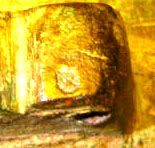 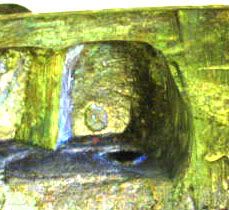 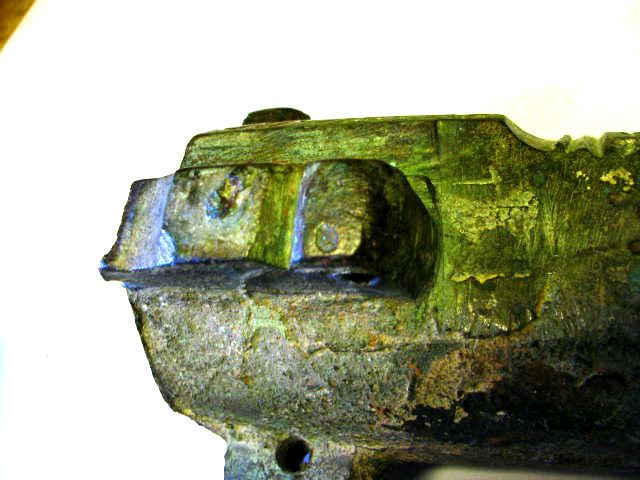   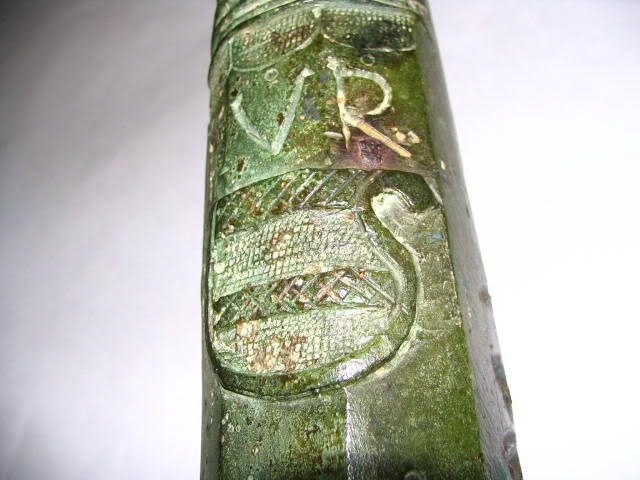  
|
|
|

|
|
|
#17 |
|
Member
Join Date: Jun 2006
Posts: 161
|
 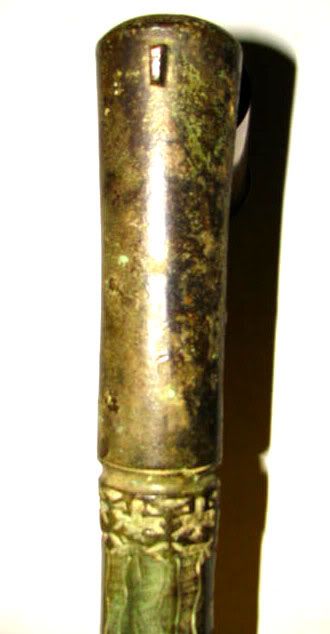  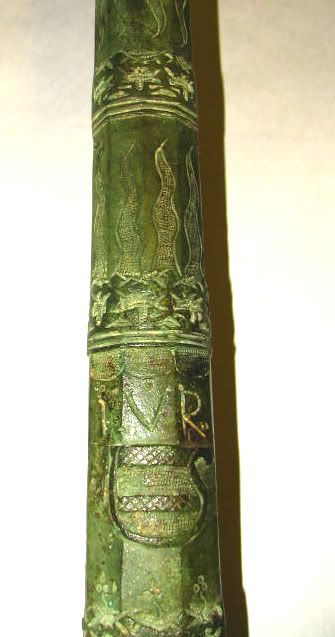  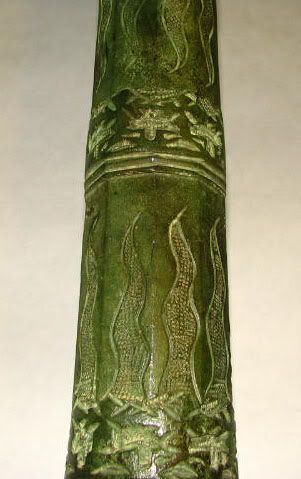  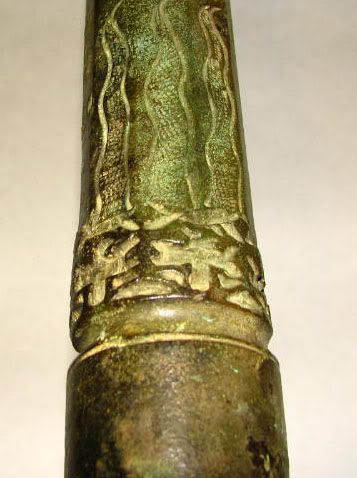
|
|
|

|
|
|
#18 |
|
Member
Join Date: Jun 2006
Posts: 161
|
 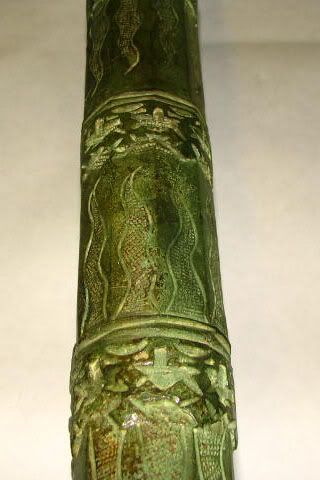 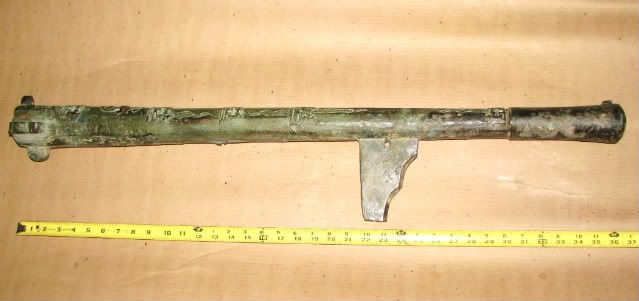 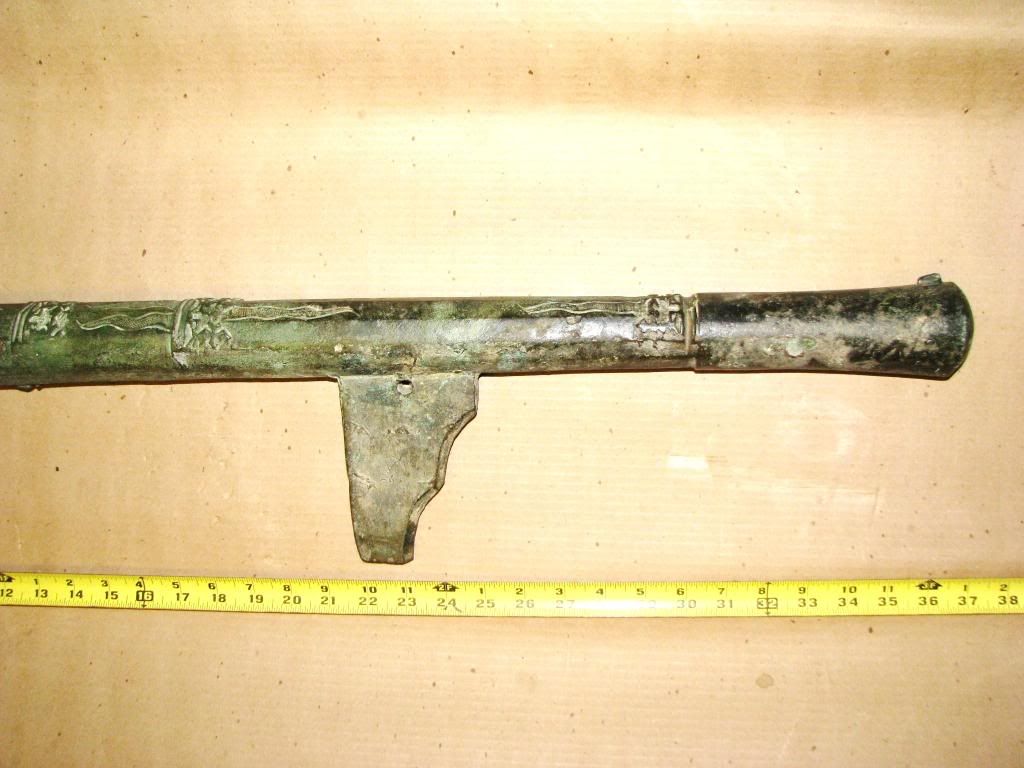 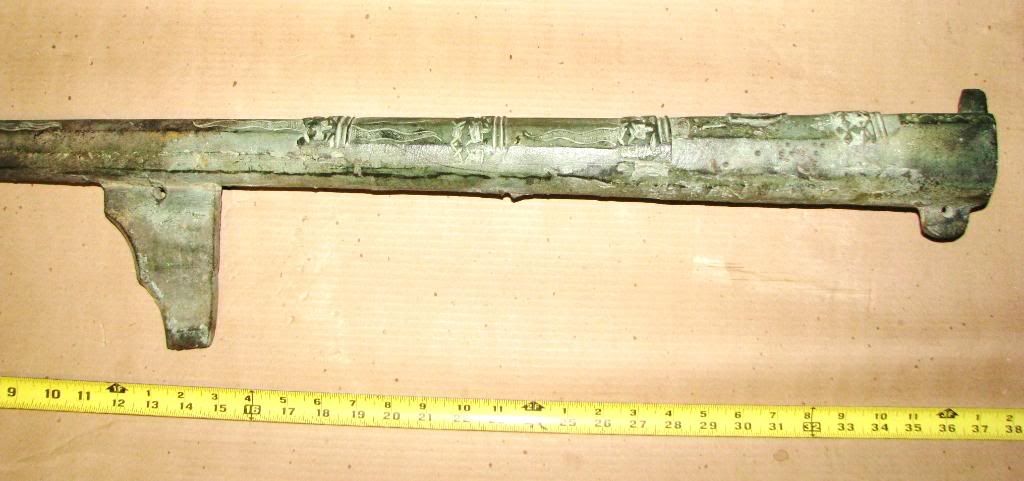 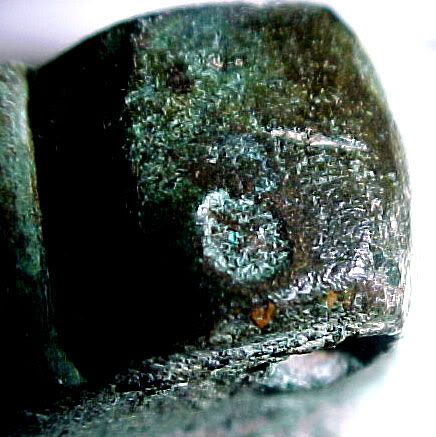
|
|
|

|
|
|
#19 |
|
(deceased)
Join Date: Sep 2008
Location: Bavaria, Germany - the center of 15th and 16th century gunmaking
Posts: 4,310
|
Good images, John,
Thanks! Great emerald green patina, very charming. I indeed tried to find out about that 'Springfield Arsenal' but I didn't. I was convinced though that is twas not the official one in MA as no place was given. As to the paragraph on Schellenberg you mentioned: what exactly do you mean by Altdeutsch - Medieval German? Is is hand-written or print? From about what century is it? If you wish to have a try, maybe I could help you along. Best, Michael |
|
|

|
|
|
#20 |
|
Member
Join Date: Jun 2006
Posts: 161
|
The portion of that article I cannot make much sense of is this, which seems to have old German word-order and impossibly long sentences:
"Zu den berühmtesten Gliedern dieses Hauses gehörte der Eingangs genannte Kriegsmann. Derselbe, anfangs nicht für den Kriegsdienst bestimmt, studirte auf den Universitäten Pavia und Bologna die Jurisprudenz und erwarb sich den Grad eines Doctors beider Rechte. Bald jedoch mehr von dem damals sehr im Flor gewesenen ritterlichen Waffenhandwerk angezogen, wohnte er von 1512 ab den hauptsächlich auf Betreiben des Cardinals Schinner um das Herzogthum Mailand unternommenen Heerzügen des Kaisers Maximilian I. in Oberitalien (u. A. der Belagerung des von ihm eingenommenen Pavia) bei, und wurde von diesem zur Anerkennung für seine hervorragenden militärischen Verdienste zum Obristen ernannt, auch unter seine Hof- und Kriegsräthe aufgenommen. Bald darauf zog er, als König Ludwig XII. von Frankreich wiederholt Mailand gegen Maximilian Sforza, den Sohn Moro's in Anspruch nahm, wieder mit seinen tapfern Schweizern nach Italien und hatte wesentlichen Antheil an den ehrenvollen Waffenthaten gegen die französischen Heerführer Trivulzi und Latremouille, so an der ruhmvollen standhaften Vertheidigung Novaras, so daß der Kaiser, der ihn gemeinsam mit seinem Bruder Hans v. S. schon im J. 1501 gleich beim Beginn seiner kriegerischen Laufbahn zum Ritter geschlagen hatte, ihm hauptsächlich für sein unvergleichliches Verhalten in der Schlacht bei Vicenza am 18. Oct. 1511 gegen die Venetianer, in welcher er mit 36 Wunden bedeckt für todt auf dem Wahlplatz liegen blieb, durch seinen Feldherrn Raimund v. Cardona diese Ehre zum zweiten Male widerfahren ließ. Auch Maximilian's Nachfolger, Kaiser Karl V., nahm auf den Rath des Grafen Rudolph von Sulz Schellenberg's Dienste in Anspruch; und wiederholt führte|S. die tapfern eidgenössischen Schaaren nach Italien, zeichnete sich in den Schlachten an der Bicocca und von Pavia rühmlichst aus und trug zur Wiedereroberung Mailands von den Franzosen und Einsetzung Franz II. Sforza in das Herzogthum Mailand das Seinige redlich bei. Schließlich machte er noch die brillante Vertheidigung Wien's gegen Sultan Soliman d. Gr. mit. Nach einem thatenreichen Leben beschloß er, überall hochgeachtet und geehrt, seine Tage ruhig in seiner Heimath, woselbst er im Chore der Pfarrkirche begraben wurde. S. wurde von seinen Zeitgenossen als ein Mann von imposanter Persönlichkeit, von Intelligenz und Thatkraft, als ein biederer, witziger und jovialer Ritter gerühmt, der seinen, hauptsächlich aus Schweizern bestehenden, Landsknechten, welche für ihn durchs Feuer gegangen wären, gehörig zu imponiren verstand." The excerpt came from this page: http://www.deutsche-biographie.de/sfz78138.html |
|
|

|
|
|
#21 |
|
(deceased)
Join Date: Sep 2008
Location: Bavaria, Germany - the center of 15th and 16th century gunmaking
Posts: 4,310
|
O.K., here's my translation:
Among the noblest members of that House was the aforementioned warrior. Though not headed for service from the beginning, he studied law at the universities of Pavia and Bologna and graduated as a doctor of jurisprudence. Soon however he got attracted by knightly crafts which were very popular then, and from 1512 onward, and he joined the Upper Italy campaigns of the Emperor Maximilian I (among them the siege of Pavia - in 1525, translator's addition - , which was taken by him (Schellenberg)), which were mostly run by Cardinal Schinner on behalf of the Duchy of Milan; in approval of his outstanding military deserts, he was appointed to be a colonel (by Maximilian) and accordingly incorporated among both the privy and war councilors. Soon after, when King Louis XII of France repeatedly requested Milan's services against Maximilian Sforza, Moro's son, he resumed another Italian campaign together with his brave Swiss mercenaries and had a decisive share of the honorable warriors' deeds against the French campaign leaders Trivulzi and Latremouile, e.g. at the gloriously steadfast defense of Novara. Consequently, the Emperor, after confering the knightly acolade upon (Ulrich) and his brother Hans v. Schellenberg already in 1501, right at the very start of his military career, saw that the same honor was done to him a second time by his commander Raimund von Cordoba, especially in recognition of his peerrless behavior during the battle near Vicenza on 18 October 1511 where he was found on the battle ground, covered with 36 wounds and left behind believed to be dead. Maximilian's successor, the Emperor Charles V, on the advice of Count Rudolph von Sulz, made use of Schellenberg's service; repeatedly Schellenberg led the brave Swiss armies against Italy, standing out most laudable in the battles at the Biocca and of Pavia and righteously adding his part to the reconquest of Milan from the French and to the installation of Franz II Sforza in the Duchy of Milan. Finally he also joined in the brilliant defense of Vienna against Sultan Suleiman the Great (in 1529, translator's addition). After a life full of deeds, and both highly esteemed and honored throughout the land, he spent his old age quietly in his home country, where he was buried beneath the parish church quire. His contemporaries used to praise Schellenberg as a man of imposing personality, of intelligence and energy, an upright, witty and cheerful knight who knew how to impress his mercenaries which were mostly composed of Swiss, who would have gone thru fire and water for him. Wow, that was one helluva stress, even for a university graduate.    Have fun, Michael Last edited by Matchlock; 7th December 2011 at 05:17 AM. |
|
|

|
|
|
#22 |
|
(deceased)
Join Date: Sep 2008
Location: Bavaria, Germany - the center of 15th and 16th century gunmaking
Posts: 4,310
|
Those interested in Ulrich von Schellenberg's personal Katzbalger sword of ca. 1515, please see
http://www.vikingsword.com/vb/showth...672#post129672 m |
|
|

|
|
|
#23 |
|
Member
Join Date: Jun 2006
Posts: 161
|
Michael, thanks so much for translating that difficult text, it certainly clears up a lot. That's the first mention I've seen anywhere that he had a brother named Hans, although the writeup begins with "Hans Ulrich von Schellenberg" and I did not understand why Hans was in block type font and 'Ulrich von Schellenberg' was in italics. Perhaps to someone more familiar with the ADB format, this would indicate two different people were being named. Brother Hans got such brief mention that I completely missed it. I greatly appreciate the assistance.
|
|
|

|
|
|
#24 |
|
(deceased)
Join Date: Sep 2008
Location: Bavaria, Germany - the center of 15th and 16th century gunmaking
Posts: 4,310
|
Here are the coats-of-arms of the von-Schellenberg family,
a) 16th c., Kissleg, Allgäu, Southwest Bavaria, and b) their device of 1609 (after Siebmacher). m |
|
|

|
|
|
#25 |
|
Member
Join Date: Jun 2006
Posts: 161
|
You are correct. Those bars and colors of the basic "blazon" are always present. The shield shape changed over time with the general practice of the heralds.
The following well-known book shows an earlier shield type that matches the shield shape on the hackbut. The book states that this earlier shape which I call the "coffee cup" was used only from 1470-1525, as I recall on page 72 or nearby. Author: Ottfried Neubecker Title: "Heraldry; Sources, Symbols, and Meaning" Price: US$ 4.06 Book Description: 288 pp., folding plate, hardcover, very good in a very good dust jacket |
|
|

|
|
|
#26 |
|
(deceased)
Join Date: Dec 2004
Location: Portugal
Posts: 9,694
|
[QUOTE=cannonmn] ... I have this little slideshow of the hackbut, and if this is not adequate I will sit down and try to figure out how to post photos individually on this forum; of course I have separate url's for each one...
QUOTE] Yes, please do that, by all means. You may read here: http://www.vikingsword.com/vb/showthread.php?t=13631 If you need further help, just tell |
|
|

|
|
|
#27 |
|
Member
Join Date: Jun 2006
Posts: 161
|
Thanks Fernando. All the photos I have were posted in replies no. 16-18 above; I hope they will be satisfactory for your purposes.
|
|
|

|
|
|
#28 |
|
Member
Join Date: Jun 2006
Posts: 161
|
I've found a more extensive biography on Ulrich von Schellenberg, here:
http://springfieldarsenal.files.word...es-excerpt.pdf Unfortunately it is in German script so I can't transfer it to Google translate for the usual quick-and-dirty translation. I wonder if there are any free German script OCR programs out there so I could at least turn it into characters to enter an automatic translator? I can transliterate German script into more useful font, but takes more time than I have. I'm not going to bother Michael about this one, he's already spent enough time translating this stuff. I've also thought more about the "JUR" marking on the gun. I still believe it will be impossible to determine, with certainty, what that stands for, however it is almost certainly from a later period than the "1525" estimated date of manufacture, as Michael has said. One reason we know that is because the letters were crowded into a nice open space intentionally left above the coat-of-arms so the c.o.a. would be reasonably centered in an open (plain undecorated) area. I think the letters indicate a subsequent owner, after Ulrich had left the battle zone of northern Italy ca. 1529. It is possible that it was captured at some point, or more likely simply retained by whatever Swiss mercenary was using it, probably with Ulrich's consent. Or perhaps it remained under control of Ulrich's commander, General Ramon de Cardona. Who knows. |
|
|

|
|
|
#29 |
|
(deceased)
Join Date: Sep 2008
Location: Bavaria, Germany - the center of 15th and 16th century gunmaking
Posts: 4,310
|
John, I read this 'biography' and believe me: it's not worth translating from a modern scholarly point of view. All it is is nothing more than an even more pompous and poetically as well as patriotically overdrawn 18th c. legendary version of the already rather bombastic 19th c. text I translated for you. No more facts, just heroic fantasy. I wouldn't give a dime.
Best, Michael |
|
|

|
|
|
#30 |
|
Member
Join Date: Jun 2006
Posts: 161
|
Thanks Michael, that will save a lot of trouble.
|
|
|

|
 |
|
|